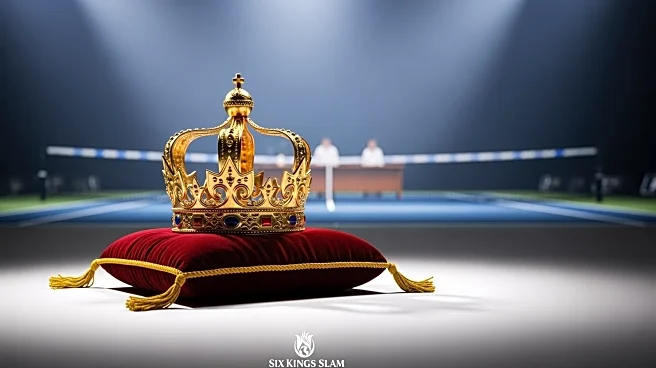What's Happening?
Novak Djokovic, a 38-year-old Serbian tennis player currently ranked fifth in the ATP world rankings, has conceptualized the perfect tennis player by drawing attributes from past legends. In an interview, Djokovic highlighted John Isner for the best serve,
Roger Federer for the forehand, Andre Agassi for the backhand, Patrick Rafter for volleying, Rafael Nadal for mental strength, Bjorn Borg for footwork, and Boris Becker for tennis IQ. Djokovic is currently participating in the Six Kings Slam exhibition tournament, where he is set to compete in a third-place match against American player Taylor Fritz. Djokovic's career is marked by 101 ATP singles titles, including a record 24 Grand Slam victories.
Why It's Important?
Djokovic's assembly of an ideal tennis player underscores the enduring influence of past tennis legends on the sport. By acknowledging the strengths of these retired players, Djokovic not only pays homage to their contributions but also highlights the evolving nature of tennis skills and strategies. This reflection can inspire current and future players to develop a well-rounded game by learning from the best aspects of past champions. Additionally, Djokovic's continued participation in high-profile tournaments, despite his age, emphasizes the longevity and adaptability required to remain competitive in professional tennis.
What's Next?
As Djokovic continues to compete in the Six Kings Slam, his performance against Taylor Fritz will be closely watched. The outcome could influence his ranking and future participation in similar exhibition events. Furthermore, Djokovic's comments may spark discussions among tennis analysts and fans about the qualities that define greatness in the sport. This could lead to increased interest in the historical achievements of the players he mentioned, potentially impacting how current players train and strategize.
Beyond the Headlines
Djokovic's remarks also highlight the cultural and historical significance of tennis as a sport that transcends generations. By selecting attributes from players across different eras, Djokovic bridges the past and present, fostering a deeper appreciation for the sport's evolution. This perspective may encourage a broader audience to engage with tennis, not just as a competitive sport but as a rich tapestry of personal and collective achievements.













